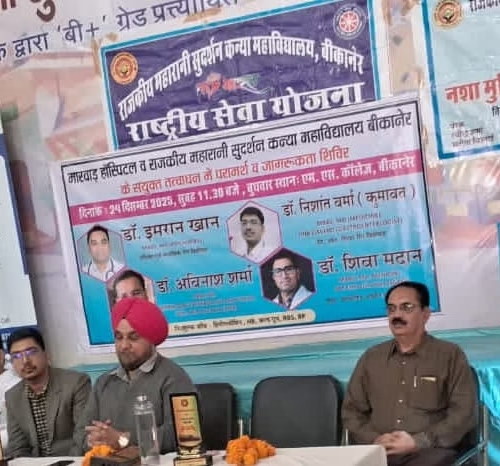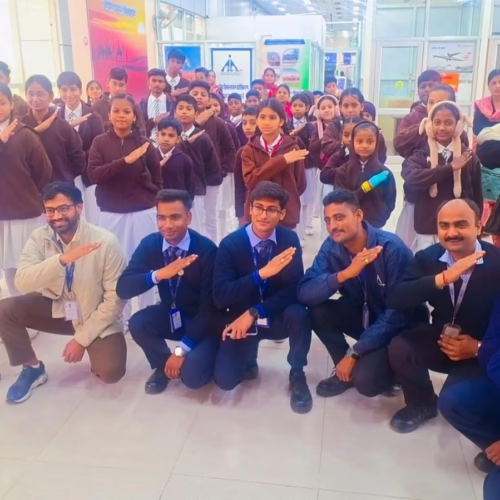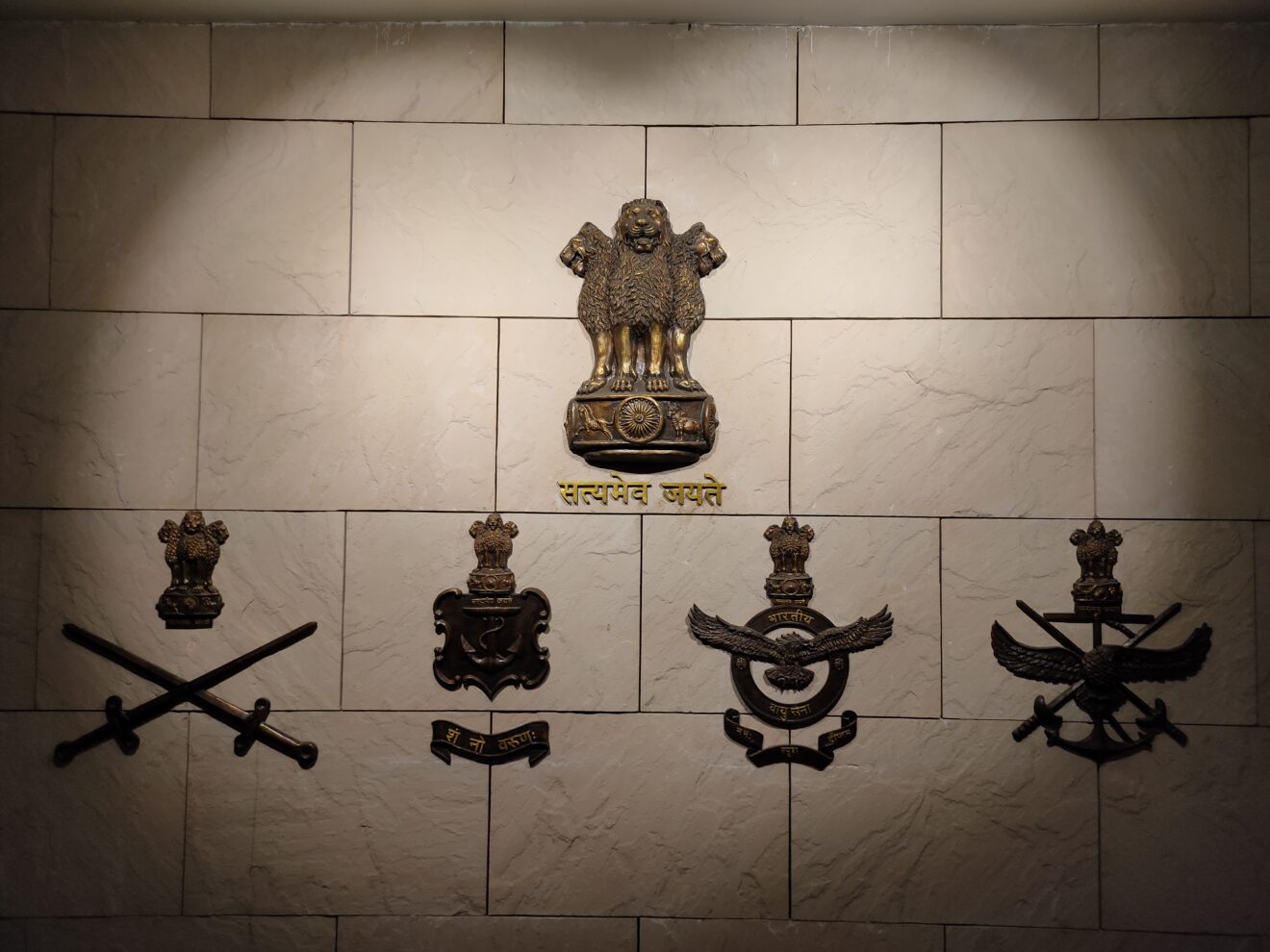BY DEFENCE JOURNALIST SAHIL | T.I.N. NETWORK
Making the Sky Invincible: Hisar Military Station Conducts High-Intensity Counter-Drone Operations, Boosts India’s Air Defence Preparedness
Hisar, Haryana | October 2025:
A transformation in modern warfare is unfolding across the Indian Army’s formations under Sapta Shakti Command. The battlefield of today no longer depends only on tanks rolling through deserts or infantry marching through rugged highlands. Silent, small, and swift—unmanned aerial systems have become the most disruptive threat along India’s sensitive borders. From surveillance to weaponised strikes, drones have emerged as the new face of asymmetric conflict. The Indian Army is responding with determination, agility, and indigenous innovation. The recent Counter-Unmanned Aircraft System (C-UAS) exercise at Hisar Military Station stands as a powerful example of this rising capability.
The exercise showcased real-time operational preparedness against drone intrusions. Integrated grid-based air defence networks were activated across the station. Multi-layered detection, tracking, jamming, and neutralisation systems were validated under realistic battlefield scenarios. Operational forces executed precision counter-drone measures while command and control organisations functioned seamlessly to ensure coordinated responses against any hostile aerial threat.
Senior defence sources described the drill as “unyielding and unstoppable,” reflecting the Army’s determined approach to safeguarding India’s skies. The exercise not only evaluated equipment performance but strengthened the synergy between tactical units, technology operators, and higher control headquarters. This synergy is exactly what future warfare demands in a rapidly evolving security environment.
Aatmanirbhar Push: Indian Army Adopts Indigenous C-UAS Technologies
An important dimension of the Hisar exercise was its commitment to Aatmanirbharta in defence technology. The systems deployed, battle doctrines tested, and weapon responses employed were largely rooted in indigenous innovation. Hisar Military Station partnered closely with civil defence industries, bringing private firms and Indian developers onto the frontline of operational testing.
Industry engineers worked alongside soldiers to understand tactical requirements and refine algorithms, radar capabilities, sensor fusion techniques, and rapid jamming engagements. The Indian Army has increasingly adopted iterative test-and-deploy models, wherein concepts are not confined to laboratories but are shaped directly on the field.
This approach creates a strong foundation for a fully Indian-built layered C-UAS shield, one that will protect forward bases, logistics hubs, strategic infrastructure, and mass troop deployments. Through these combined efforts, India sends a clear message: counter-drone warfare will not rely on imports. The strength will come from within the nation.
Adapting to Modern Threats: The New Battlefield Reality
Recent global conflicts have proven that low-cost commercial drones can cripple billion-dollar military assets. The proliferation of drone warfare by state and non-state actors alike presents a clear danger to India’s northern and western borders. At Siachen Glacier, where soldiers face some of the world’s harshest conditions, hostile drones have begun to test Indian security. In the western desert sector near Rajasthan, smuggling syndicates and terror operatives have tried to push weapons and narcotics using quadcopters. Across the Line of Control, adversaries are rapidly investing in drone-based combat options.
These threats triggered the Indian Army’s strategic shift: turning traditional defence forces into technology-empowered combat formations. Sapta Shakti Command has taken the lead, ensuring its units remain future-ready through operational restructuring, cutting-edge systems, and innovative tactical doctrines.
Theatre-Level Coordination Strengthens India’s Air Shield
C-UAS operations at Hisar were guided by a theatre-level command and control architecture. This ensures instant threat identification, rapid decision cycles, and swift neutralisation responses. Information flows across multiple layers of control nodes, ensuring no hostile threat escapes detection.
Personnel from artillery, air defence units, signal regiments, and aviation elements worked as a unified combat force. New-age sensors including electro-optical surveillance, passive detection arrays, and radar-equipped launchers created a formidable surveillance web. From counter-jamming measures to kinetic kills and soft-kill engagement, the Army validated every layer of defence.
Officers emphasised that future conflicts will be won by those who dominate the electromagnetic and aerial micro-domain. Hisar’s exercise marks a critical leap in India’s combat evolution.
The Road Ahead: Tailor-Made Combat Units for the Drone Era
India’s defence establishment recognises that every terrain demands a customised response. The desert requires long-range surveillance and faster engagement to cover wide, sparse lands. The mountains require stealth technology and a rapidly deployable jamming shield due to unpredictable line-of-sight challenges. Urban centres demand non-collateral solutions to neutralise threats above populated zones.
A new generation of tailor-made counter-drone forces is now emerging within the Indian Army—combat ready, technology powered, and equipped with doctrines that reflect the challenges of tomorrow.
Conclusion: Unbreakable Resolve to Guard India’s Skies
Hisar Military Station’s exercise sends a bold and confident message across the borders. The Indian Army is relentless in strengthening national security. Its warriors, equipped with state-of-the-art systems and indigenous power, remain unyielding in their mission. Atmanirbhar counter-drone capability is no longer a concept. It is reality, deployed, tested, and growing stronger with every passing week.
Making the sky invincible is more than a slogan. It is a commitment that the Indian Army upholds with every measure of precision, vigilance, and sacrifice.
BY DEFENCE JOURNALIST SAHIL | T.I.N. NETWORK
दुश्मन ड्रोन से आसमान की सुरक्षा: हिसार मिलिट्री स्टेशन में उन्नत C-UAS अभ्यास से भारतीय सेना ने दिखाई भविष्य की लड़ाकू क्षमता
हिसार, हरियाणा | अक्टूबर 2025:
आधुनिक युद्ध के मैदान में बदलाव अब खुली आंखों के सामने है। आज का खतरा कोई भारी हथियारबंद टैंक या आसमान में गरजते लड़ाकू जहाज ही नहीं, एक छोटा-सा ड्रोन भी युद्ध की दिशा बदल सकता है। निगरानी करने वाले ये सूक्ष्म यान अब हथियारों से लैस होकर महत्वपूर्ण सैन्य ठिकानों, सीमा चौकियों और संवेदनशील ढाँचों के लिए गंभीर चुनौती बन चुके हैं। इसी खतरे को सामने रखते हुए भारतीय सेना ने Sapta Shakti Command के अंतर्गत हिसार मिलिट्री स्टेशन में व्यापक Counter-Unmanned Aircraft System (C-UAS) अभ्यास आयोजित किया, जिसने भविष्य की लड़ाई के प्रति सेना की तैयारी को चट्टान-सा मजबूत साबित कर दिया।
इस अभ्यास के दौरान पूरे सैन्य स्टेशन में ग्रिड-आधारित हवाई रक्षा नेटवर्क सक्रिय किया गया। विभिन्न श्रेणी के डिटेक्शन सेंसर, ट्रैकिंग सिस्टम, जामिंग तकनीक और त्वरित न्यूट्रलाइज़ क्षमता का वास्तविक युद्ध परिस्थितियों में परीक्षण किया गया। टैक्टिकल स्तर से लेकर कमांड एवं कंट्रोल संगठनों तक सभी ने निर्बाध समन्वय के साथ उच्च दक्षता का प्रदर्शन किया। यह प्रशिक्षण केवल उपकरण परीक्षण नहीं था, बल्कि यह भारतीय सेना की चपलता, तत्परता और रणनीतिक तालमेल का जीवंत प्रदर्शन था।
आत्मनिर्भर भारत का मजबूत कदम: स्वदेशी तकनीकों का दमदार प्रदर्शन
इस सैन्य अभ्यास की सबसे बड़ी विशेषता रही Atmanirbharta की शक्ति का उभरता रूप। अभ्यास में इस्तेमाल कई Counter-Drone तकनीकें, सेंसर, जामिंग सिस्टम और नियंत्रण तंत्र स्वदेशी रक्षा उद्योगों द्वारा विकसित किए गए हैं।
हिसार में आयोजित इस C-UAS वॉर गेम के दौरान सेना के विशेषज्ञों और निजी रक्षा कंपनियों के इंजीनियरों ने जमीन पर मिलकर काम किया, ताकि तकनीक और सैन्य जरूरतें एक साथ विकसित होती रहें। भारतीय सेना अब पारंपरिक “लैब से फील्ड” मॉडल को उलटकर “फील्ड से लैब व फिर फील्ड” मॉडल अपना रही है, जिसमें सैनिकों की तैनाती वाली जगह पर ही सिस्टम की कमियां और सुधार तुरंत दर्ज कर तकनीक को वास्तविक लड़ाई के अनुकूल बनाया जाता है।
यह सहयोग भारत के लिए स्वदेशी परतदार वायु सुरक्षा प्रणाली विकसित करने की दिशा में निश्चित रूप से एक बड़ा कदम है। अब भारत स्पष्ट संदेश दे रहा है कि Counter-Drone क्षमता किसी दूसरे देश की मोहताज नहीं, बल्कि देश की अपनी वैज्ञानिक और औद्योगिक शक्ति पर आधारित होगी।
सीमाओं से सीख: ड्रोन खतरा ही भविष्य की असली चुनौती
हाल के वर्षों में विश्वभर के संघर्षों ने सिद्ध कर दिया है कि कम लागत वाले छोटे ड्रोन भी करोड़ों डॉलर के सैन्य उपकरणों को पंगु बना सकते हैं। गैर-राज्य तत्वों द्वारा सीमा पार से ड्रग्स, हथियार और आईईडी गिराने की घटनाएं भारत के लिए चेतावनी बन चुकी हैं।
उत्तर की ऊंची बर्फीली चोटियों पर तैनात सैनिकों से लेकर पश्चिमी मरुस्थलीय सीमा तक, हर क्षेत्र में दुश्मन ड्रोन भारत की सुरक्षा व्यवस्था की परीक्षा लेने की कोशिश कर रहे हैं। ऐसे में भारतीय सेना ने रणनीतिक परिवर्तन किया है। पारंपरिक लड़ाकू संरचना में अब तकनीकी प्रभुत्व को केंद्र में रखते हुए युद्ध कौशल को पुनर्परिभाषित किया जा रहा है।
Sapta Shakti Command इस तकनीकी परिवर्तन का प्रमुख नेतृत्वकर्ता बनकर उभरी है।
थियेटर-लेवल कंट्रोल: मिल कर लड़ने की नई क्षमता
हिसार में आयोजित C-UAS एक्सरसाइज की सफलता इस बात का प्रमाण है कि भारतीय सेना ने थियेटर स्तर पर अपने कमांड एवं कंट्रोल तंत्र को नए युद्ध क्षेत्र की जरूरतों के अनुरूप ढाल लिया है। सूचना का संचार अब तेज, निर्णय अब त्वरित, और कार्रवाई अब पहले से अधिक सटीक है।
आर्टिलरी, एयर डिफेंस, सिग्नल्स और अन्य तकनीकी रेजिमेंट्स ने एक संयुक्त लड़ाकू शक्ति का उत्कृष्ट प्रदर्शन किया। निगरानी के आधुनिक उपकरणों, इलेक्ट्रो-ऑप्टिकल सिस्टम, रडार और निष्क्रिय सेंसरों का इस्तेमाल कर एक सघन सुरक्षा जाल तैयार किया गया, जिसने किसी भी संदिग्ध ड्रोन को अनदेखा नहीं होने दिया।
अधिकारी स्पष्ट कर रहे हैं कि भविष्य के युद्ध में जीत उसी की होगी जो आकाश के इस सूक्ष्म क्षेत्र में प्रभुत्व बनाएगा।
भविष्य के लिए कस्टमाइज्ड लड़ाकू यूनिट्स
भारत की रक्षा रणनीति अब हर भू-परिदृश्य के अनुरूप नई Counter-Drone यूनिट्स तैयार कर रही है।
मरुस्थल में लंबी दूरी की निगरानी क्षमता आवश्यक है।
पहाड़ों में त्वरित तैनाती और चुपचाप काम करने वाली तकनीक की जरूरत होती है।
शहरी क्षेत्रों में ऐसी तकनीक चाहिए जो बिना नागरिक क्षति के दुश्मन ड्रोन को निष्क्रिय कर सके।
इन्हीं जरूरतों को ध्यान में रखते हुए tailor-made combat units विकसित की जा रही हैं, जिनमें सैनिक तकनीक के साथ एकीकृत होकर भविष्य के युद्ध के लिए पूरी तरह तैयार रहें।
निष्कर्ष: भारत का आसमान अब और भी सुरक्षित
इस अभ्यास ने यह स्पष्ट कर दिया है कि भारत का आसमान किसी भी जोखिम के सामने कमजोर नहीं पड़ेगा। भारतीय सेना हर चुनौती से दो कदम आगे है।
भविष्य के युद्ध में ड्रोन चाहे कितने भी चतुर और घातक क्यों न हों, Sapta Shakti Command के योद्धाओं ने यह साबित कर दिया कि भारत तैयार है।
अटल संकल्प, अत्याधुनिक तकनीक और स्वदेशी शक्ति के साथ भारतीय सेना दुश्मन के हर इरादे को ध्वस्त करने के लिए प्रतिबद्ध है।
आसमान को अभेद्य बनाना केवल नारा नहीं, यह राष्ट्र की सुरक्षा की शपथ है… और भारतीय सेना इसे पूरी दृढ़ता से निभा रही है।














Add Comment